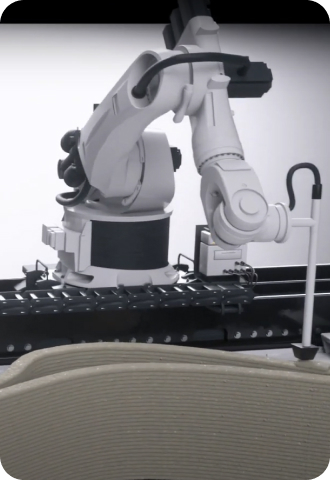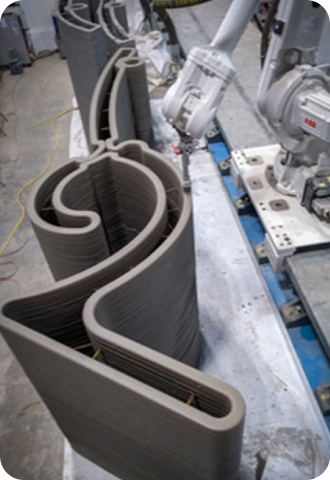Design and construction techniques to ensure the structural stability of civil engineering structures
-
- Design Automation Based on ENG Platform
-
The ENG Platform is a standardized work environment for design unit tasks to minimize individual deviations and improve the quality and accuracy of design results through the standardization of processes across the disciplines in design work. We operate in seven core disciplines, including PSC bridges, cable bridges, TBM, NATM, C&C, caissons, and landfill/reclamation, and perform design using modules such as Checklist, Guideline, and Design Tool.
Recently, we have been building an automated platform through the linkage between modules for major design activities, and pursuing the introduction of intelligent design technologies such as AI-based Machine Learning and Generative Design.
-
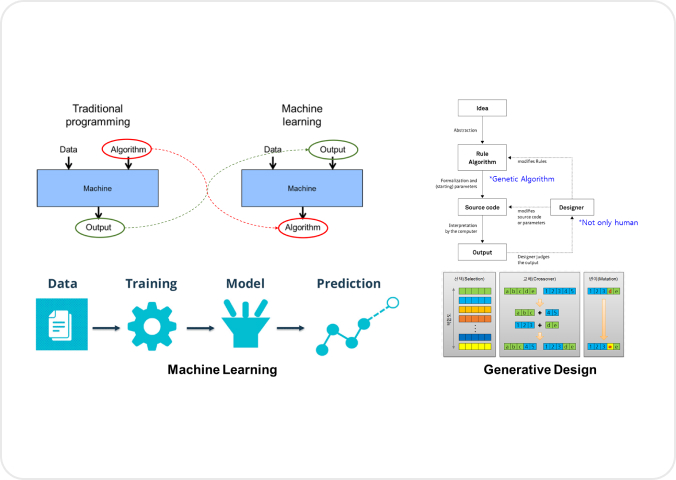
Design automation process
-
- Design and Construction Technology for Precast Structures
-
The precast method entails pre-fabricating concrete structures at specialized facilities or factories before transporting them to the construction site for assembly and installation. This approach offers several advantages, including its suitability for projects with spatial and temporal constraints and its eco-friendliness due to the minimization on-site work. The precast method is being applied to various civil engineering products such as bridges, tunnels, stations, and caissons, with plans to expand its scope of application.
When applying the precast method, safety and maintenance considerations must be taken into account when establishing partition plans and connection solutions for the precast structure. Precast components are then produced at dedicated facilities or factories in accordance with these plans. Once fabricated, the precast components are transported to the construction site, lifted, and installed based on the established construction stage plan.
-
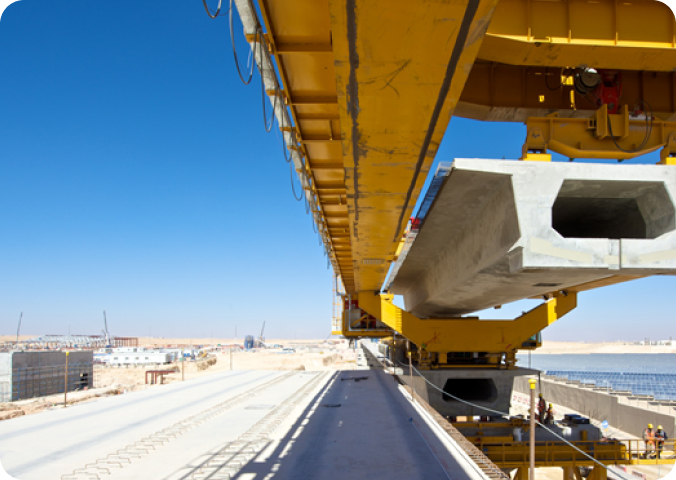
Precast bridge installation scene (Riyadh Metro, Saudi Arabia, FSLM method)
-
- Bridge Shape Management Technology
-
Special bridges featuring long, slender, and flexible characteristics with nonlinear cables require stringent displacement and cable tension management due to the wide range of structural systems throughout the construction stages. Consequently, precise shape management analysis and technology are applied to cable bridges such as arch bridges, suspension bridges, and long-span PSC cable bridges.
Shape management technology, a critical factor in special bridge design and construction, encompasses initial shape determination, construction stage analysis, and completed structure analysis. To optimize bridge design and construction, the precise analysis considers factors such as cables and material nonlinearity. This approach enables accurate shape management for cable bridges, including arch bridges, suspension bridges, and PSC bridges.
-
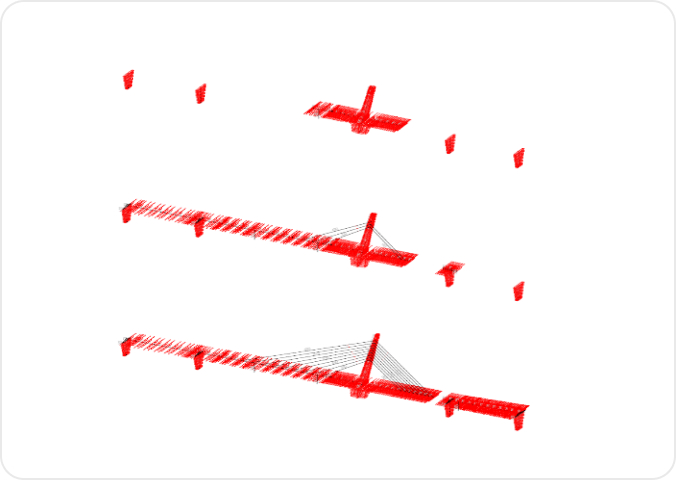
Bridge shape management according to construction sequences
-
- Construction Automation Technology Using 3D Printing
-
We are developing 3D printing technology utilizing robotic arms to expand the applicability of unmanned automated construction technology within the civil engineering field. The implementation of this technology can reduce labor costs, mitigate skilled worker availability risks, and minimize construction safety and quality risks.
Based on our secured automatic construction technology for non-structural retaining walls, we are exploring its application to internal force structures and irregularly shaped landscape facilities. In addition, we continue to advance 3D printing equipment through horizontal material extrusion and the development of coarse aggregate materials.
Construction of structures using a 3D printer
